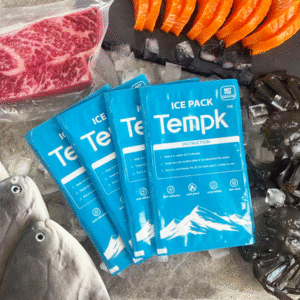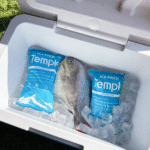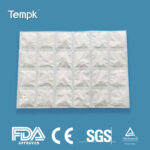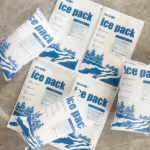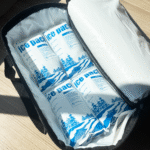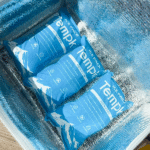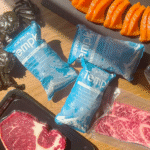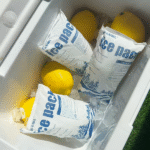كيفية تعبئة الثلج الجاف لشحن اللحوم المجمدة بأمان?
يتطلب شحن اللحوم المجمدة دون المساس بالجودة التحكم الدقيق في درجة الحرارة, خاصة عند استخدام الثلج الجاف. من الضروري فهم الكميات الصحيحة من الثلج الجاف, أفضل مواد التعبئة والتغليف, واللوائح التي يجب عليك اتباعها لضمان بقاء منتجات اللحوم مجمدة أثناء النقل ووصولها في حالة ممتازة. في هذا الدليل, سنغطي أساسيات كيفية تعبئة الثلج الجاف لشحن اللحوم المجمدة بأمان, مساعدتك على البقاء متوافقًا مع 2025 المبادئ التوجيهية أثناء تحسين عملية الشحن.
-
ما هي كمية الثلج الجاف التي تحتاجها كل 24-72 ساعة لشحن اللحوم المجمدة بشكل آمن?
-
ما هي قواعد تصميم العبوة والتنفيس التي يجب عليك اتباعها للامتثال لها?
-
كيف تقوم بطبقة العزل, لحمة, والثلج الجاف للحفاظ على درجة الحرارة?
-
ما العلامات التنظيمية, الوثائق, واحتياطات السلامة مطلوبة?
-
ما هي الاتجاهات الناشئة في لوجستيات سلسلة التبريد؟ 2025?
ما هي كمية الثلج الجاف التي يجب أن تستخدمها لشحن اللحوم المجمدة خلال 1-3 أيام؟?
الإجابة الأساسية:
يجب أن تقدر ما بين 5 إلى 10 رطل من الثلج الجاف لكل قطعة 24 ساعات لظروف الشحن النموذجية. لكن, وقد يحتاج هذا المبلغ إلى تعديل حسب مدة الشحنة, درجة الحرارة المحيطة, والعزل المستخدم.
توضيح:
يتسامى الثلج الجاف بمعدل 5-10 رطل تقريبًا لكل 24 ساعات, حسب ظروف الشحن وجودة العزل. على سبيل المثال, عند الشحن 10 رطل من اللحم, قد تحتاج حولها 7 رطل من الثلج الجاف يوميًا لعبور قصير. في الطقس الدافئ أو لمسافات أطول, سوف تحتاج المزيد. يساعد اختبار شحنتك باستخدام أجهزة قياس درجة الحرارة على ضمان الحصول على أفضل النتائج.
| مدة الشحن | كمية الثلج الجاف النموذجية | خطر الاستهانة | التطبيق العملي |
|---|---|---|---|
| 1 يوم (بين عشية وضحاها) | 5-8 رطل (2.3-3.6 كجم) | ذوبان جزئي, حواف دافئة | الشحنات المحلية |
| 2 أيام | 10-15 رطلا (4.5-6.8 كجم) | يسخن اللحم أو يذوب جزئيًا | الشحنات عبر الولايات |
| 3 أيام | 15-20 رطلا (6.8-9 كجم) | ذوبان كامل, فقدان الجودة | المناطق البعيدة أو النائية |
نصيحة: لفترات عبور أطول أو في المناخات الحارة, يُنصح بزيادة حمل الثلج الجاف بمقدار 20% أو استخدم مواد عازلة أكثر سمكًا لإبطاء التسامي.
ما تصميم التعبئة والتغليف & قواعد التنفيس يجب عليك اتباعها?
الإجابة الأساسية:
يجب أن تسمح عبواتك دائمًا بتنفيس غاز ثاني أكسيد الكربون, لا تغلق محكم الإغلاق, وينبغي أن تتضمن التسميات اللازمة: "الجليد الجاف" أو "ثاني أكسيد الكربون, صلب,"و 1845, والوزن الصافي للثلج الجاف بالكيلو جرام.
توضيح:
كما يسامي الثلج الجاف, يطلق غاز CO₂. إذا كانت العبوة محكمة الغلق, يمكن أن يتراكم الضغط ويمزق الحاوية. لتجنب هذا, يجب أن تحتوي العبوة الخارجية على فتحات تهوية, ويجب ألا يكون المبرد الداخلي مغلقًا بإحكام. يجب أن تتوافق مواد التعبئة والتغليف مع إرشادات المواد الخطرة لضمان السلامة.
التسميات المطلوبة:
-
"الجليد الجاف" أو "ثاني أكسيد الكربون, صلب"
-
رقم الأمم المتحدة: و 1845
-
الوزن الصافي للثلج الجاف (كجم)
-
فصل 9 تسمية المواد الخطرة
-
الشاحن & عناوين المستلمين
عملية التغليف:
-
الصندوق الخارجي: استخدم لوحًا أليافًا مموجًا أو صندوقًا بلاستيكيًا متينًا.
-
العزل: أضف ألواح الرغوة EPS أو العزل الصلب حول اللحوم والثلج الجاف.
-
تهوية: تأكد من قدرة العبوة على تنفيس ثاني أكسيد الكربون من خلال عدم إغلاق المبرد الداخلي بإحكام شديد.
كيفية طبقة العزل, لحمة & الثلج الجاف للتحكم في درجة الحرارة?
الإجابة الأساسية:
عند تعبئة اللحوم المجمدة بالثلج الجاف, يجب أن يحيط الثلج الجاف باللحم من جميع الجوانب ويوضع فوقه لضمان دخول الهواء البارد عبر المنتج. يجب استخدام العزل لإبطاء دخول الحرارة, ويجب ملء جميع الفراغات بمواد التغليف.
توضيح:
-
وضع اللحوم: ضع اللحم المحكم الغلق في وسط المبرد لتقليل تعرضه للهواء.
-
وضع الثلج الجاف: ضع الثلج الجاف في الأعلى وحول جوانب اللحم, ولكن تجنب الاتصال المباشر باللحوم لمنع حرق الفريزر. تأكد من أن الثلج الجاف غير معبأ بإحكام ويمكن أن يتسامى دون قيود.
-
العزل: استخدم الرغوة أو المواد العازلة الأخرى لملء الفجوات وتقليل فرص تقلبات درجات الحرارة.
مثال على طبقات التغليف:
-
قومي بغلق اللحم بتفريغ الهواء ثم ضعيه في المنتصف.
-
نحيط اللحم بما يقارب 10 رطل من الجليد الجاف.
-
يستخدم 2 بوصة من العزل الرغوي حول الثلج الجاف.
-
املأ أي فراغات بالورق المجعد أو عازل السليلوز لمنع تحركه.
-
تأكد من أن غطاء المبرد مفتوح قليلاً أو به فتحات تهوية للسماح بخروج الغاز.
ما العلامات التنظيمية, التوثيق & خطوات السلامة مطلوبة?
الإجابة الأساسية:
يعد الالتزام باللوائح أمرًا ضروريًا عند شحن الثلج الجاف. يتضمن ذلك وضع العلامات على العبوة بشكل صحيح والتأكد من التعامل معها من قبل موظفين معتمدين على دراية ببروتوكولات شحن المواد الخطرة.
توضيح:
يعتبر الثلج الجاف فئة 9 مواد خطرة, ويتطلب شحنها اهتمامًا دقيقًا بالمبادئ التوجيهية التنظيمية لضمان السلامة والامتثال.
التوثيق الرئيسي & أمان:
-
وضع العلامات السليم: قم دائمًا بتسمية الصندوق الخارجي بـ "الثلج الجاف" أو "ثاني أكسيد الكربون"., صلب,"تشمل رقم الأمم المتحدة, والوزن الصافي للثلج الجاف.
-
إعلان الشاحن: للشحنات الجوية لأكثر من 5.5 رطل (2.5 كجم), تضمين إعلان الشاحن عن البضائع الخطرة.
-
الاحتياطات المعالجة: تعامل دائمًا مع الثلج الجاف باستخدام قفازات معزولة واعمل في مناطق جيدة التهوية لتجنب تراكم ثاني أكسيد الكربون.
نصائح الامتثال:
-
لا تقم أبدًا بإغلاق العبوة بإحكام. تأكد من إمكانية تنفيس ثاني أكسيد الكربون بحرية.
-
تأكد من أن التعبئة ووضع العلامات تتوافق مع القواعد الخاصة بالناقل (على سبيل المثال, FedEx, يو بي إس, USPS).
-
استخدم مسجلات بيانات درجة الحرارة لمراقبة الظروف الداخلية أثناء النقل.
2025 الاتجاهات في شحن الثلج الجاف وابتكارات سلسلة التبريد
نظرة عامة على الاتجاه:
في 2025, صناعة الخدمات اللوجستية لسلسلة التبريد تتطور, مع التركيز على التغليف الأكثر ذكاءً, مراقبة درجة الحرارة في الوقت الحقيقي, واستخدام المواد الصديقة للبيئة لتحسين الكفاءة وخفض التكاليف.
أحدث الابتكارات:
-
مراقبة درجة الحرارة الذكية: تنبهك أجهزة الاستشعار المتصلة بإنترنت الأشياء إذا انحرفت درجة الحرارة عن النطاق المطلوب أثناء النقل.
-
مواد صديقة للبيئة: عالية الأداء, أصبحت المواد المستدامة مثل بطانات VIP أكثر شيوعًا, توفير عزل أفضل مع تقليل التأثير البيئي.
-
تحسين المسار المدعوم بالذكاء الاصطناعي: تستخدم منصات التوصيل الذكاء الاصطناعي لتحسين المسارات بناءً على ظروف درجة الحرارة, تقليل أوقات العبور وتقليل استخدام الثلج الجاف.
رؤى السوق:
مع تزايد طلب المستهلكين على شحنات اللحوم المجمدة المباشرة إلى المستهلك, ومن الضروري اعتماد هذه الابتكارات لتحسين الموثوقية, تقليل النفايات, وبناء ثقة العملاء. العلامات التجارية التي تعمل على تحسين طرق تعبئة الثلج الجاف الخاصة بها مع تبني الاستدامة سوف تكتسب ميزة تنافسية.
الأسئلة المتداولة (التعليمات)
س 1: ما هي كمية الثلج الجاف التي أحتاجها لشحن اللحوم المجمدة؟ 48 ساعات?
تحتاج عادةً إلى 10-15 رطلاً (4.5-6.8 كجم) من الجليد الجاف ل 48 ساعات, اعتمادا على نوعية العزل ودرجة الحرارة المحيطة. قم دائمًا بإجراء اختبار باستخدام مسجلات درجة الحرارة.
Q2: هل يمكنني إغلاق صندوق الشحن بإحكام؟?
لا, يجب أن يسمح الصندوق بالتنفيس لمنع تراكم الضغط من غاز ثاني أكسيد الكربون. يمكن أن ينفجر الصندوق المغلق بإحكام أثناء النقل.
س 3: ماذا لو تأخرت شحنتي ونفد الثلج الجاف؟?
للتخفيف من هذا الخطر, قم دائمًا بتضمين مخزن مؤقت (ثلج جاف إضافي), اختر طرق النقل السريعة, والعمل مع شركات النقل التي يمكنها تجديد الثلج الجاف إذا لزم الأمر.
ملخص & التوصيات
الوجبات الرئيسية:
لتعبئة الثلج الجاف لشحن اللحوم المجمدة بشكل آمن, تأكد دائمًا من التهوية المناسبة, وضع العلامات الدقيقة, والكمية المناسبة من الثلج الجاف. استخدم العبوات المعزولة للحفاظ على درجات الحرارة المنخفضة واتبع الإرشادات التنظيمية لضمان الامتثال. اختبار الشحنات باستخدام أجهزة قياس درجة الحرارة لضبط كميات الثلج الجاف.
الخطوات التالية بالنسبة لك:
-
قم بمراجعة العبوة الخاصة بك للتأكد من أنها مُحسّنة لظروف الشحن المحددة الخاصة بك.
-
استخدم آلة حاسبة للثلج الجاف لتقدير الحمل بشكل أفضل.
-
تدريب فريقك على التعامل مع الثلج الجاف وفهم اللوائح المطلوبة.
حول Tempk
نحن متخصصون في تقديم حلول سلسلة التبريد لصناعة الشحن, وخاصة في نقل المواد الغذائية المجمدة والمنتجات الحرارية الحيوية. مبتكرة لدينا, خيارات التغليف الصديقة للبيئة, جنبا إلى جنب مع خبرتنا في إدارة درجة الحرارة, تأكد من وصول منتجاتك بأمان وفي الوقت المحدد. سواء كنت بحاجة إلى خطة مخصصة لسلسلة التبريد أو نصيحة بشأن الامتثال التنظيمي, Tempk هنا للمساعدة.






